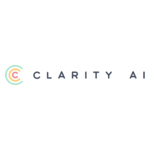The EU Taxonomy aims to align market participants on definitions of sustainability, but investors need to dig deeper to know just how “green” a fund really is
NEW YORK–(BUSINESS WIRE)–#ESG–The EU Taxonomy aims to align all market stakeholders on what is considered sustainable in the context of the EU, but investors need greater transparency on just how green the funds they are buying really are. Analysis by Clarity AI, the market-leading, global sustainability technology platform, reveals significant differences between fund revenues aligned with green – and EU Taxonomy related – objectives across different types of sustainable investment products in the market today.


Under the Sustainability Finance Disclosure Regulation (or SFDR), investors need to report the EU Taxonomy alignment as part of the sustainability profile of funds, which need to be classified into one of three categories:
- Article 6: non-sustainable funds
- Article 8: funds that promote sustainable characteristics but not as an overarching objective
- Article 9: funds that have been specifically created to address sustainability goals
In a whitepaper titled “EU Taxonomy: Using Tech to Analyze ‘Green’ Fund Performance,” Clarity AI analyzed an investable universe of 31,000 equity funds on how these products perform against new EU Taxonomy requirements and assessed the common traits across funds, which are often branded in some way as “green.” The analysis shows that:
- Globally, 3.6% of revenues can be considered green (“green revenues”) – that is, they contribute to mitigating climate change.
- Only 7% of the 31,000 equity funds analyzed have more than 10% green revenues, as defined in the EU taxonomy.1
- Article 9 climate-branded funds present four times higher alignment with the EU taxonomy than the overall sample average, with 15% of revenues classified as green. Article 8 funds, however, have a similar alignment to the average, with 3.9% green revenues.
- Funds focused on sectors that are doing heavy lifting in the green transition, such as utilities, show a higher exposure and alignment, with 25% green revenues.
- Funds with equity themes, such as alternative energy, are naturally more aligned with a green economy, with up to 27% green revenues.
Patricia Pina, Head of Product Research & Innovation at Clarity AI, said: “Considering the disparate definitions of and frameworks for sustainability all around the world, we can look to the EU Taxonomy as a pioneer in setting a common standard to align a large segment of global market stakeholders. At Clarity AI, we believe regulation needs to be supported by detailed, data-led insights, and transparency cannot be a nice-to-have. It is a must-have.
“The EU recognizes that a key requirement to further the development of the sustainable investment market is ‘access to high-quality sustainability-related data.’ 2 This high-quality data also means moving away from subjectivity and using an objective and fact-based definition of what should be considered ‘green,’ ‘social,’ ‘environmental,’ and so on. The EU taxonomy gives us a common language that will enable stronger decision making and an acceleration to a more sustainable economy.
“Reliable, transparent insights are at the heart of fact-based sustainable finance. They should become the norm in making informed decisions around ‘green’ investing.”
Notes to editors
About Clarity AI
Clarity AI is a sustainability technology platform that uses machine learning and big data to deliver environmental and social insights to investors and organizations. As of December 2021, Clarity AI’s platform analyzes more than 30,000 companies, 180,000 funds, 198 countries and 187 local governments, and delivers data and analytics for investing, corporate research and reporting. Clarity AI has offices in the US, Europe, and the Middle East. Clarity AI’s client network manages trillions in assets under management. clarity.ai
Methodology
Clarity AI developed a comprehensive assessment of how companies and funds align with the EU Taxonomy classification of sustainability using its proprietary sustainable analytics technology platform. Clarity AI draws on the broadest possible spectrum of tools and data sources available to increase the coverage, precision and objectivity of the sustainability analysis, while remaining transparent. The method in this paper relies on the three steps of Clarity AI’s EU Taxonomy analysis and displays two key metrics that investors will need to report:
- % Eligible green revenue: as defined by revenues exposed to the activities outlined in the EU Taxonomy
- % Aligned green revenue: which builds upon eligible activities and embeds an assessment of the technical screening criteria, DNSH and SS requirements
Through its sustainability tech platform, Clarity AI can scalably assess >180,000 funds and >30,000 organizations. For this report, Clarity AI selected a subset of its universe where it takes a deeper look into the EU Taxonomy alignment for more than 31,000 funds globally. Clarity AI focused the analysis on the parent funds (independent of the asset classes) of equity-only funds for which it has enough characterization of the fund (e.g., assets under management, description, etc.). For the sake of comparison, they cover a broad range of regions, sectors and strategies.
1 As per the EU Taxonomy’s methodology of calculating alignment: Use the weighted average of the percent green revenues by company, which is based on the weights within a portfolio
2 As per the European Commission study published in June 2021
Contacts
Media Contact
Edelman
Julia Wright
clarityAI@edelmansmithfield.com




